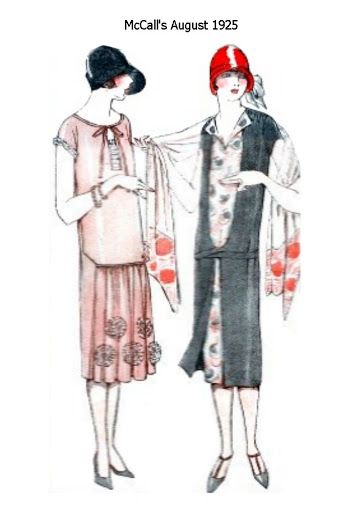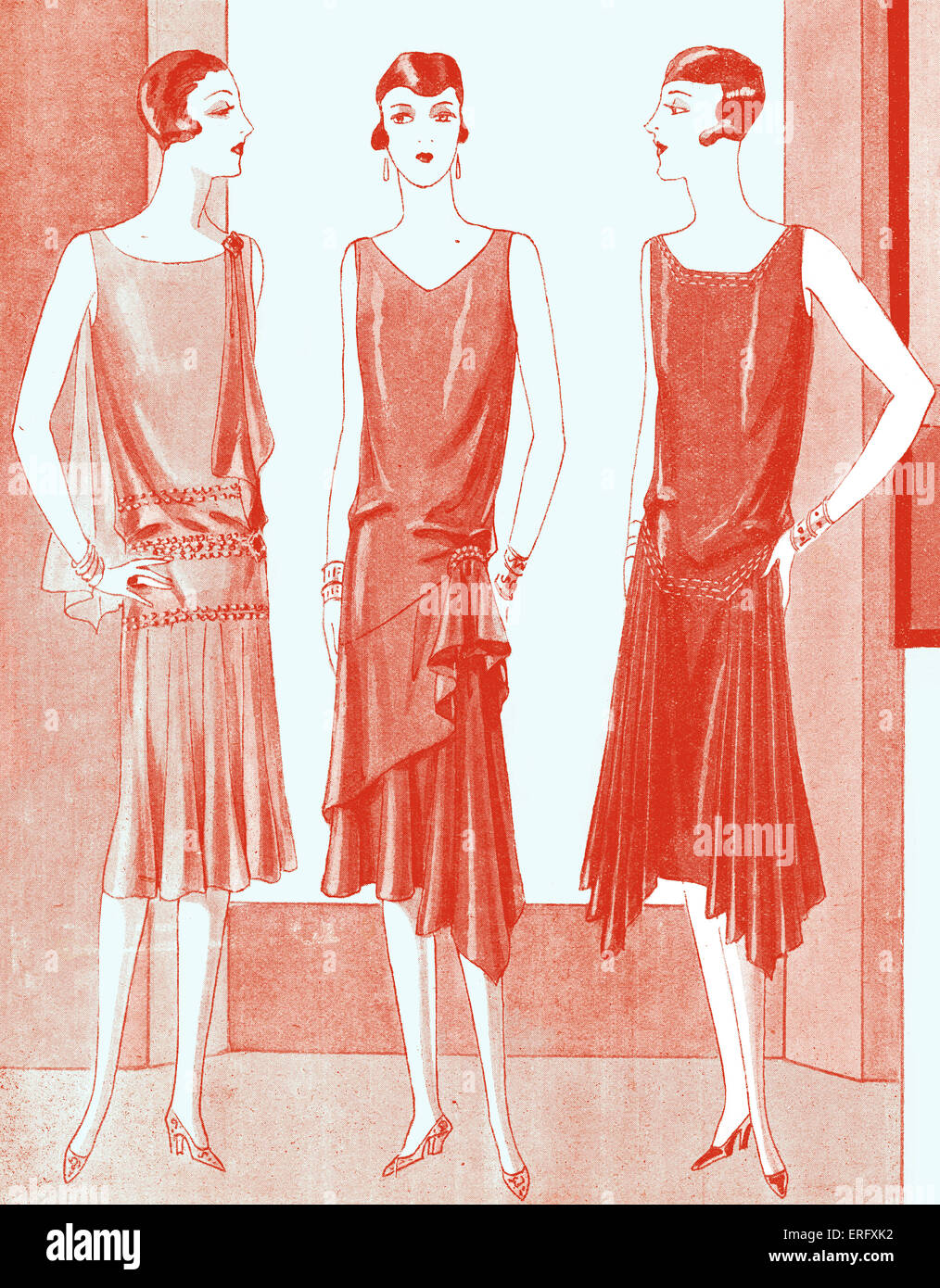All 1920s drawings ship within 48 hours and include a 30-day money-back guarantee. 1920s portraits 1920s movies 1920s fashion 1920s hairstyles. 1 - 72 of 2,472. Many of drawings and sketches of Coco Chanel designs featured women wearing a beautiful cloche hat. Chanel's 'Little Black Dress' Handbags. Another result of stripped down 1920s fashion was the prominence of handbags which appeared more and more as the pockets on women's dresses disappeared. Plus women were carrying more stuff: lipstick, powder. As a versatile art form, fashion illustration is intended to showcase the material, colors, and design of clothing. In addition to acting as a study of style, these drawings also inadvertently offer a glimpse into the history of fashion design and social pop culture of the time, as evident in this collection of delicate and detailed illustrations.
Coco Chanel designs revolutionized fashion in the 1920s, and remain the bleeding edge of fashion today!
With their stripped down lines, vibrant use of color and texture, addition of hats and scarves for visual interest Chanel's designs were a popular addition to the world of 1920s fashion. How to make a pokemon rom hack on mac.
Madge Garland, an outspoken fashion critic in the 1920s, wrote, 'The whole position of women in Western civilization, is her struggle for equality and her success, is reflected in the garments she has worn.'
Garland is probably minimizing the important role of women in the history books, but the fact remains, fashion plays a large role in determining whom the history books write about.
The Reinvention of Women's Suits


1920s Fashion Sketches
If there is a single design Chanel is famous for it is her signature suit. Featuring straight lines, a boxy collarless jacket, paired with a matching skirt.
Chanel's designs were simple and understated for a reason. Not only did the minimalized style speak for itself with it's vibrant colors and exotic fabrics, but the designs lent themselves to accessorizing.
Chanel Accessories
Chanel designed accessories that complemented her clothes. These bracelets, necklaces, watches, earrings, and rings would become a trademark of the Coco Chanel Design house. With her 'illusion jewelry' in the 1920s Chanel set herself apart from the other designers.
Chanel's jewelry complemented her clothes. Sometimes the jewelry would just be a simple strand of pearls, at other times she would design a gaudy, 'costume' look contrasting the simple lines of her suits. Chanel also designed brooches, lapel pins, shoes and hats to wear in addition to her clothes.
Many of these designs were inspire by the Cubist and African art that was popular in 1920s France.
Sportswear
Chanel also designed many types of sportswear in the 1920s. She spent some time in the French Riviera, afterward she designed clothes meant to be worn in times of leisure, such as on vacation, or when getting some sun.
During this period, Coco Chanel designs pants made for lounging on the beach, she called them 'beach pajamas,' which would later be called 'bell-bottoms.'
Chanel designed leisurewear specifically for an active lifestyle of playing tennis and golf. These were comfortable elegant clothes, like pleated tennis skirts which can still be found today. Winamp music player download for pc.
Hats
Another keystone of the 1920s look, the cloche hat was popularized during this time. Many of drawings and sketches of Coco Chanel designs featured women wearing a beautiful cloche hat.
Handbags

Another result of stripped down 1920s fashion was the prominence of handbags which appeared more and more as the pockets on women's dresses disappeared.
Plus women were carrying more stuff: lipstick, powder, cigarettes, flasks of whisky, etc. Chanel had knockoff purses being sold in the magazines and catalogs for 15 or 16 dollars.
Coco Chanel designs took center stage in the 1920s. Her design company still thrives today due to the ingenuity, business sense, and great fashion design of one of the legends of fashion.
Visit Decolish, for more great info on Coco Chanel
In the beginning of the 1920s fashion transformation, the word 'flapper' really meant something. It signified a youth that had charm and attraction. In the 1920 flapper era’s earliest years she was known as 'a sprightly and knowing miss in her early teens.' Within years it came to mean so much that it was practically meaningless.
The twenties flapper girl qualified her personality with adjectives and adverbs or with passions that rose into superlatives. It was used unfairly by all the elders who wanted to keep youth out of the game of running things, so that they could maintain an everlasting, doddering grip on modern progress. Flapper! Dreadful young creatures— squealing and squawking and showing their legs!
The following poem written about the roaring twenties style by Muriel Ives clarified some of the animosity towards this new modern flapper girl:
I wish I were a flapper— I wish I were a flapper— I wish I were a flapper— I wish I were a flapper— I wish I were a flapper— |
In retrospect, was the 1920s flapper dress not more sensible, sanitary, comfortable and sightly than her Victorian grandmother's? Just remember the bustle — a hump of deformity—and the skirt with four yards dragging on the ground, raking up the dust.
| 1920s Dress 'Femme Batang-Padang' |
In 1922, Gazette du Bon Ton featured several sketches of 'Robes a Danser' (dancing dresses). These designs were glamorous and chic, stylish and “modern', the perfect style for the 1920s flapper dress. The fashions were inspired by the costumes of 'femmes de couleur de l'Afrique Centrale' (women of color of central Africa). |

The 1920 flapper girl’s after-war significance entangled itself with the 'dreadful' side of youth—with jazz, short skirts, bobbed hair and glistening legs. She embraced the 'immodest' omission of corsets; cigarette smoking; petting parties and gasoline buggy riding. The twenties flapper was enthralled with psychoanalysis, Greenwich Village follies and Ziegfeld chorus girls. She was captivated with one-piece bathing suits; with so-called modernism in art; with the intellectual manners of Mrs. Asquith, Countess of Oxford. She experimented with exposing and slandering of old fogies; with birth control and eugenics; with Bolshevism, both the parlor variety and the Russian experiment; or with anything else that the newspapers happened to be full of and the elder generation of the ultraconservative sort didn't approve.
1920s Dress |
These 1920s dresses were described as 'sketches of dresses perfect for dancing' offering wild ornaments of braid straw and necklaces of wood. |
1920s Drawings
The Delineator, in 1921, declared that “seven eligible bachelors say she [flapper] would be a failure as a wife, and they refuse to marry her.” One bachelor was twenty-six years old, good looking, earning $8,000 a year, with an enviable war record; he explained why they would not marry the “modern girl.” The flapper or modern girl was too 'easy.' He preferred “another ten years of single blessedness.” He felt that the flapper let the barriers down too far and the respect of men went with them. He shared his thoughts with other young men and their opinions boiled down to this unpleasant term: the modern girl was too 'easy'. Moreover, these gentlemen saw the average flapper girl as “blasé” because of her experimental attitude towards life which always prompted her to 'try it once.' The average mother had a shock in store for her if she ever found her daughter out. The bachelor claimed that most flapper girls had their mother fooled to a 'fare-ye-well.'
1920s Dress |
The 1920s dresses were inspired by the African women who dance around the 'light of the tribe' and follow the undulation of the body as they collide and 'fly around in the frenzy of the dance.' |

He further explained that in the younger country club set —'children' of eighteen to twenty—it was common to see the girls and boys surreptitiously tilting a hip flask into the lemonade, or in a dark conservatory taking it 'straight.' They went on long un-chaperoned motor rides and 'mushed it up,' as they called it, with most disconcerting frankness. These girls, who smoked, drank and danced like demi-mondaines, were really the 'nice' girls from affluent families. My Lord! If the nice girls are like this, what can be expected of girls who have had far fewer opportunities in the world? The modern flapper girl has no reticence; she wants only to be popular with men.
1920s Dress
'Princess Bara (Afrique)'
1920s Dress
'Vallee du Chari'
Find 1920s Style Clothing
Attending a Flapper party or want to arrange a Boardwalk Empire bash? Learn how to dress for motoring, afternoon tea, formal dinner, wedding and, of course, a dance party. Shapely curves were concealed and flat-chested was in! Explore the sophistication of 1920s dresses as you plan your fancy dress or masquerade costume. What could be more fun than 1920s style fashions and millinery creations, all featured in wonderful color pictures.
